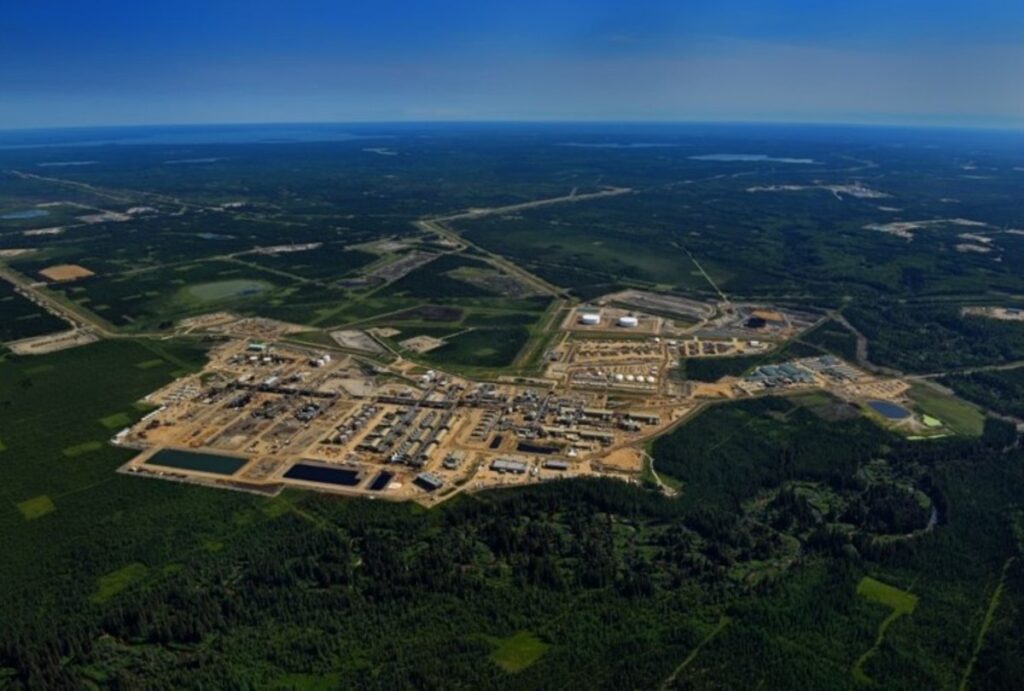
(Reuters Breakingviews) – When it comes to finding black gold, oil companies have easier places to look than in the ground. That logic explains a fraught battle between oil sands firms Cenovus Energy and Strathcona Resources for MEG Energy. Both suitors have lobbed in bids worth just under C$8 billion for their rival, with a vote coming later this month. With demand uncertain and investors hungry for cash, it’s simply more appealing to extract oil from the Toronto Stock Exchange than a new mine.
It’s a great time to be an established oil firm in Canada’s frozen north. Despite a penalty for the relatively low-quality, sulfurous crude springing from the oil sands of Alberta and hefty transport costs, existing mines break even in a range from around $20 a barrel for surface oil to $40 for mined bitumen, according to S&P Commodity Insights. With the West Texas Intermediate benchmark trading over $60, producers with online operations are minting money.
Building a new mine is another question. The up-front costs for a project run into the billions, multiples more than a well in the U.S. Permian Basin, home to the fracking boom. That makes the oil sands the most expensive source of new supply, according to a study by Rystad Energy last year.
With demand growth largely stagnant, electric vehicle sales quickly rising, and damage from climate change increasing, wildly polluting and long-lived projects like those in Canada risk becoming white elephants. Investors therefore prefer dividends and repurchases to spending on new production. MEG Energy’s cash from operations has tripled since 2018. After paying down most of its debt, the company is now focused on returning that lucre to shareholders.
Other firms follow the same logic. Total oil sands capital expenditure in Alberta was C$13 billion last year, according to the province’s government, or about a third of spending a decade earlier.
The thing is, these same dynamics make an existing mine tempting. While it’s cheaper to drill in Texas, shale well production often drops by two-thirds after one year. Tar sands projects, on the other hand, churn out oil for decades.
Buying a rival and sharply cutting costs can therefore produce long-term, steady profit. Cenovus thinks it can juice $400 million of annual synergies. Taxed at the rate it paid last year and put on a multiple of 10, that would be worth some C$3 billion, or about 30% more than the premium it is offering. Strathcona sees the same logic. With only so many targets to go around, a fight was inevitable.
- Cenovus Energy sweetened its takeover offer for MEG Energy on October 8 to C$29.80 per share, or C$7.6 billion. The Canadian oil sands company is offering 50% cash and 50% stock.
- Cenovus said this is its “best and final offer.” MEG and Cenovus have also amended the terms of an existing standstill agreement to allow Cenovus to buy up to 9.9% of MEG’s shares. MEG’s board of directors has recommended the offer.
- Rival oil producer Strathcona Resources previously kicked off a bidding war when it made an unsolicited offer for MEG in May. Its latest all-stock bid is valued at $30.04 per share using Strathcona’s opening stock price on October 9. Strathcona is MEG’s largest shareholder, with a 14% stake.
- A shareholder meeting is scheduled for October 22.
Share This:




 CDN NEWS |
CDN NEWS |  US NEWS
US NEWS 




























COMMENTARY: How Our “Knowledge System” Catastrophizes The Side-Effects of Fossil Fuels – Alex Epstein